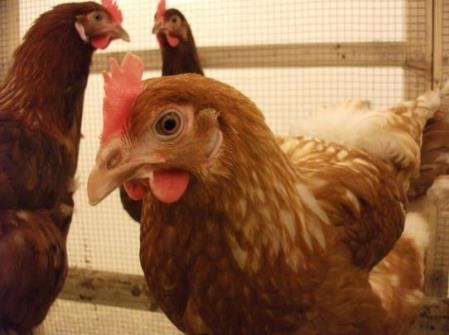
Fundamental understanding of welfare
Animal welfare refers to animal feelings, health, and environmental suitability. These projects explore which animals are sentient and what feelings they have, and how behaviour, health, environments, and welfare interrelate.

Challenge
Examples of topics within this RVC project theme include:
Welfare and the Brain – In these projects we evaluate how animal brains produce or indicate emotions. For example, we evaluated whether the brains of animals such as crabs and lobsters might be capable of supporting sentience, which is the ability to experience good and bad feelings. We also investigate neurological signs of emotions, such as brain electrical activity during interest versus boredom in ferrets, to help us understand how similar emotions are between humans and other animals.
Normal and Abnormal Behaviour – We investigate links between behaviour and welfare. Changes in normal behaviour can represent key early indicators of change in other aspects of welfare, such as health. Abnormal behaviour usually indicates poor welfare, but its causes and consequences can be complex. We study risk factors for abnormal behaviour in animals including horses and dogs, and explore its implications for welfare captive breeding in carnivores, including the rare European mink.
Cognition and Emotion – Cognition refers to how animals perceive and process information, including their learning and memory abilities. Animal cognition can affect what emotions they can experience, and how well they can cope with challenges. For example, we investigated the welfare implications of social behaviour and cognition in pigs and poultry in different farm environments. We also investigate links between cognition and welfare in pet dogs.
Associations between welfare indicators – if welfare is a unitary concept there should be a degree of convergence between results when different methods of assessing welfare are employed. We study how animal preferences, cognitive markers of affective state and physiological measures inter-relate.
Solution
We use a wide range of techniques to investigate these fundamental questions, each of which is tailored to the particular hypothesis and species involved. Emotions are subjective (private) to the individual experiencing them, which makes them challenging to investigate scientifically. The solution is to measure the physiological and behavioural manifestations of them, and the contexts in which they may occur. Developing clear hypotheses about the observable changes one would expect to see with different emotional responses is crucial for valid animal welfare research.
We use highly systematic methods to observe and record animal behaviour, giving well defined, quantitative data. We define the behaviour that we record objectively, using ethograms, and we use experimental designs that minimise bias and maximise the robustness of the research. Our study designs can range from experimental to epidemiological, and the settings include laboratories, pets’ homes, and even farms.
We try to avoid using invasive techniques for our animal welfare research whenever possible, so our studies of animal brains often involve using existing data or data that is already being collected for other purposes. For example, we use veterinary neurology data from clinical cases, data already being collected by neuroscientists, post-mortem samples, or published data.
Some of the techniques we use to answer fundamental questions about the brain and emotions are adapted from other fields of science, such as psychology, neuroscience, and animal cognition research, so these projects are often inter-disciplinary.
We also investigate inter-relationships between different measures of welfare to establish validity, to better understand the course and degree of representation of welfare issues through time, allowing for the streamlining of welfare assessment. For example by housing animals, such as domestic hens, in highly-preferred and less-preferred environments, we can assess how candidate welfare indicators are associated with this fundamental marker of valence (positive or negative experiences).

Impact
Fundamental research into the emotional lives of animals can increase animal welfare in a number of ways, including raising public opinion of certain species, deepening understanding of what welfare issues could affect animals, and providing evidence to improve animal welfare policies. For example, when we find risk factors for abnormal behaviour in particular animals, or interventions that can help prevent their abnormal behaviour, these are often incorporated into policies within the organisations that keep these animals.
Our work investigating the capacity for sentience in cephalopods and decapod crustaceans concluded that the evidence suggests that these animals are likely to be sentient. This led the UK government to include these groups of species as being within the scope of the Animal Welfare (Sentience) Bill in 2021, potentially paving the way for legislation protecting these animals from unnecessary suffering.
Identifying clusters of measures that discriminate between positive and negative experiences in animals permits a more valid assessment of welfare in any practical context. This work can help to identify the most appropriate measures to take to assess welfare across a range of contexts.
Partners
We thank our funders (including government bodies, research councils, charities and others), our collaborators, and the organisations we work with on the various projects.
Publications
For the most up to date publication lists, please check the Animal Welfare Science and Ethics researcher pages.
|
Title |
Publication |
Year |
|
Animal Behaviour |
2022 |
|
|
Behavioural Processes |
2022 |
|
|
Review of the evidence of sentience in cephalopod molluscs and decapod crustaceans |
Defra commissioned independent report |
2021 |
|
Animal |
2021 |
|
|
Canadian Journal of Animal Science |
2020 |
|
|
Behavioural Brain Research |
2019 |
|
|
Improving the sustainability of ex situ populations with free mate choice |
Zoo Biology |
2018 |
|
Applied Animal Behaviour Science |
2018 |
|
|
Socially mediated arousal and contagion within domestic chick broods |
Scientific Reports |
2018 |
|
Animal Behaviour |
2018 |
|
|
Animal Behaviour |
2017 |
|
|
Applied Animal Behaviour Science |
2017 |
|
|
Zoo Biology |
2016 |
|
|
Applied Animal Behaviour Science |
2016 |
|
|
Animal Welfare |
2014 |
|
|
Environmentally Enriched Male Mink Gain More Copulations than Stereotypic, Barren-Reared Competitors |
PLoS ONE |
2013 |
|
Applied Animal Behaviour Science |
2013 |
|
|
British Poultry Science |
2011 |
